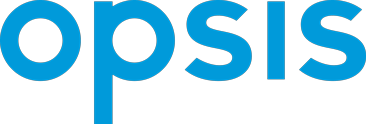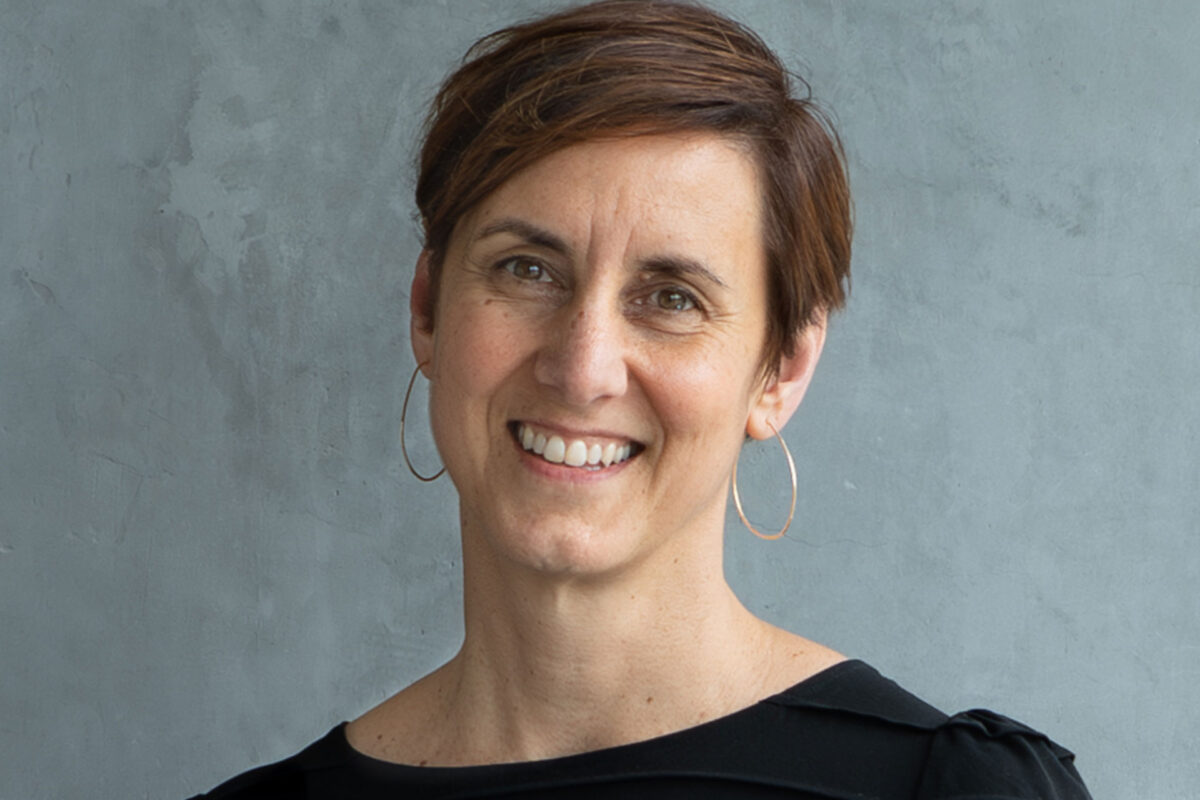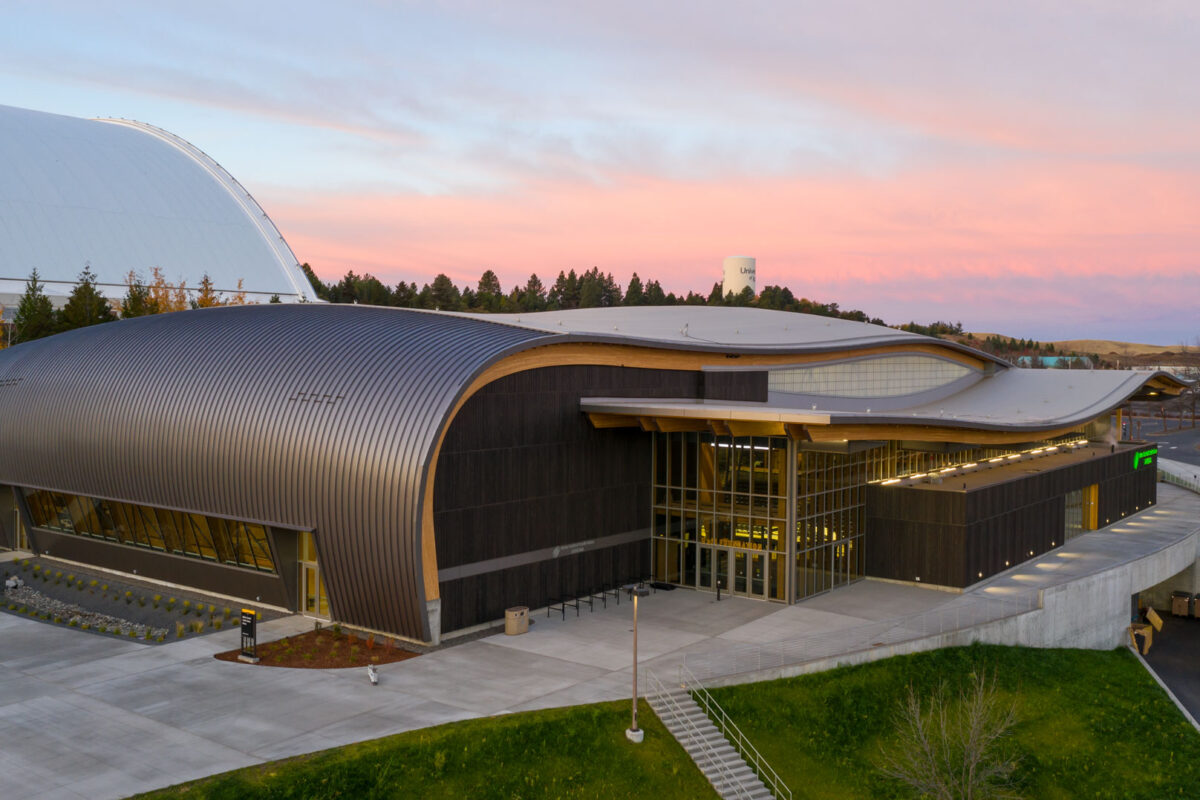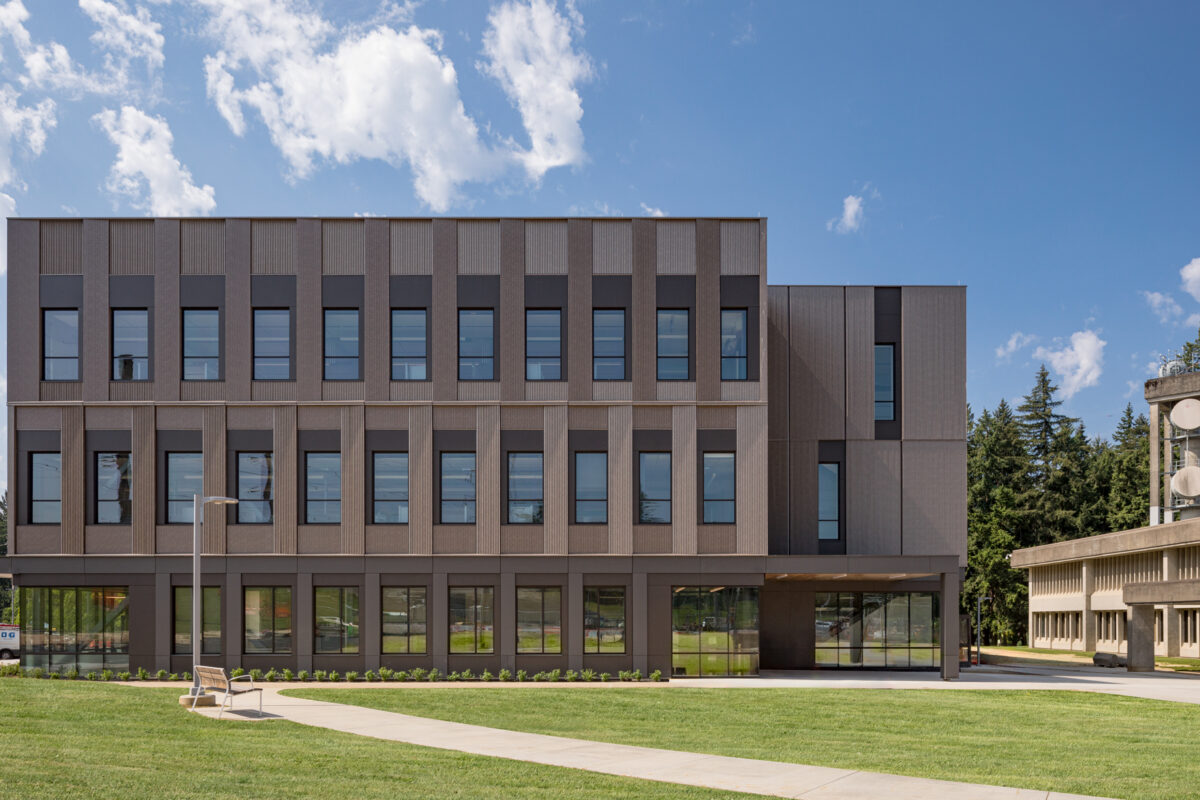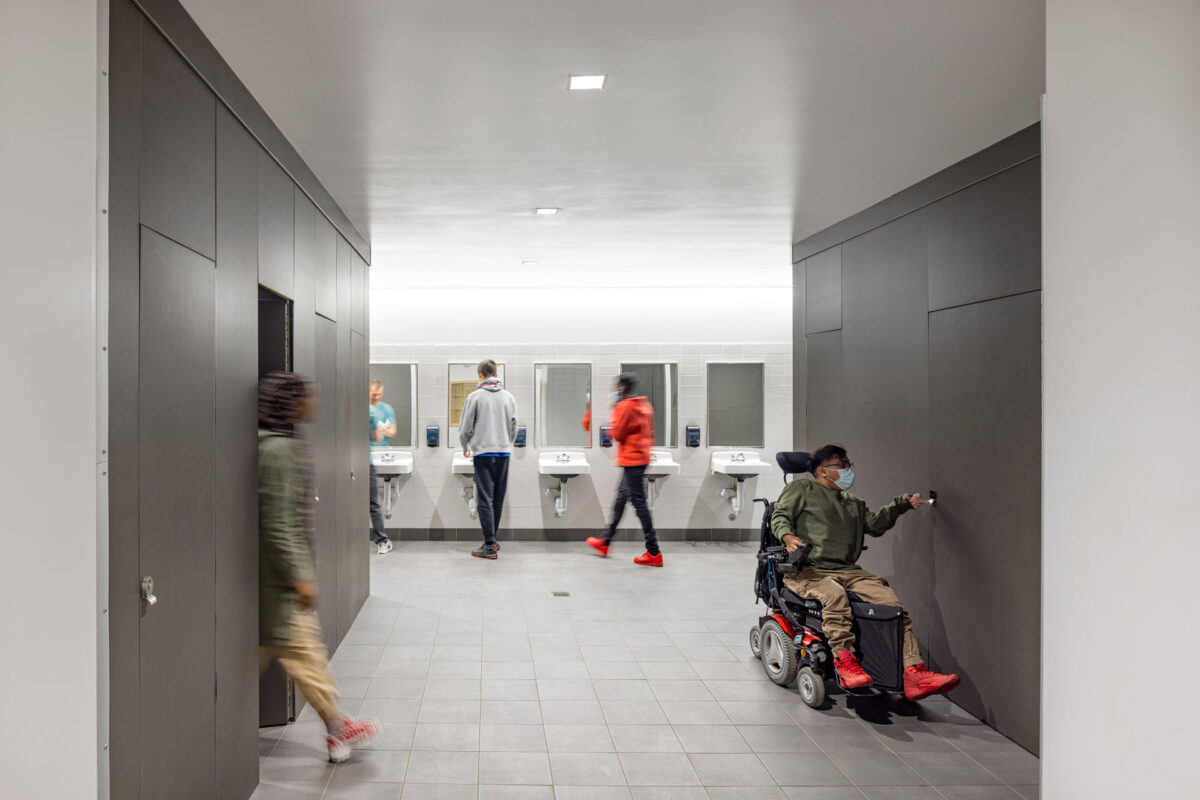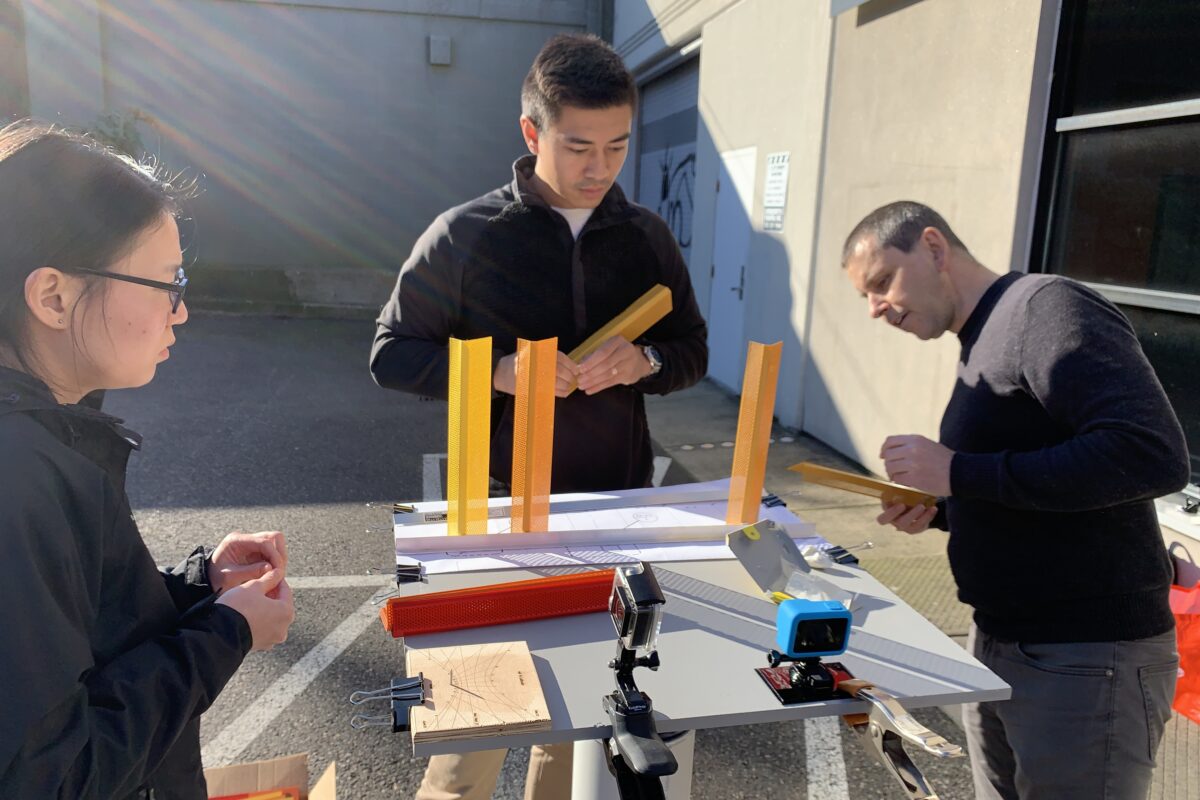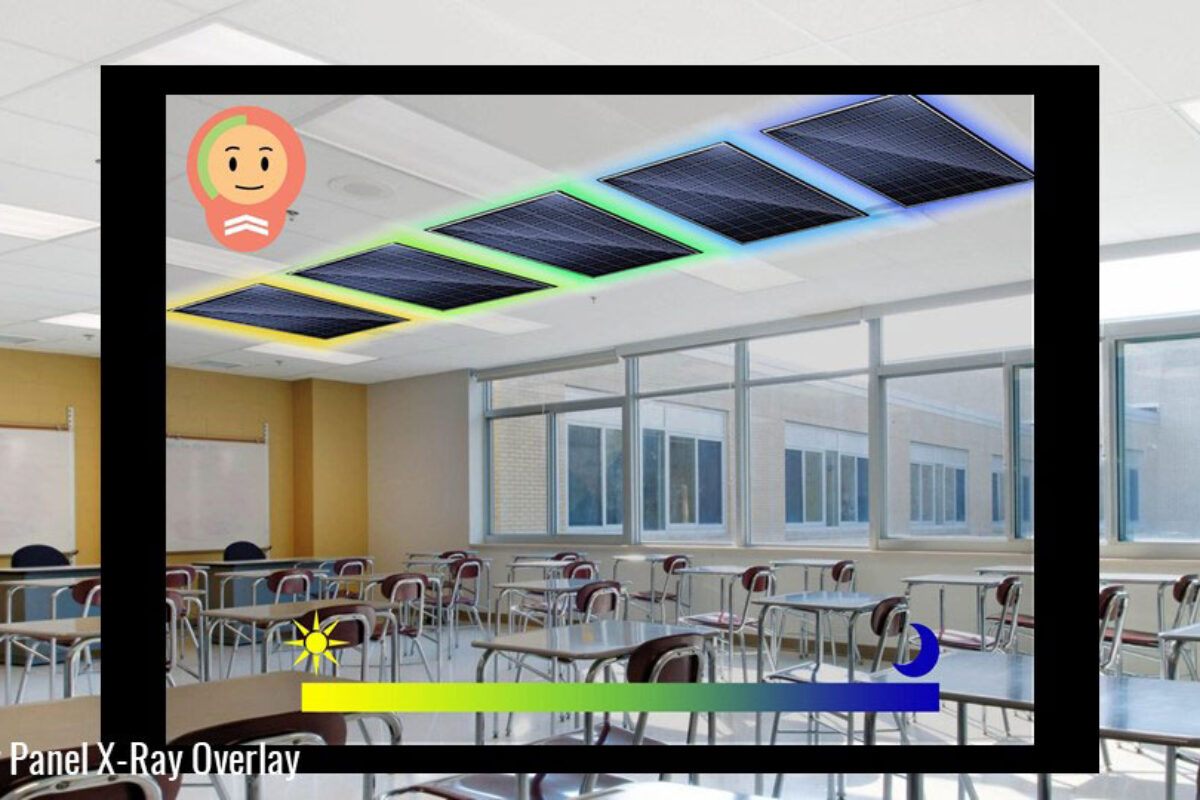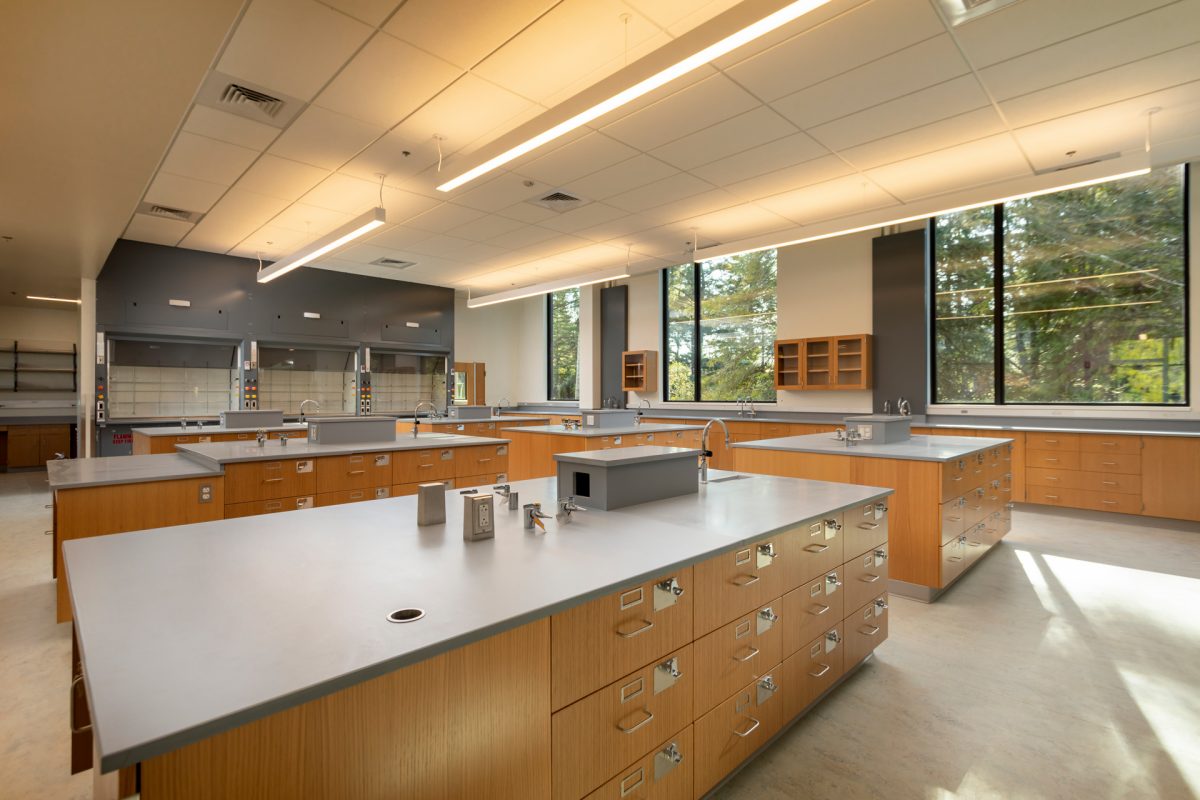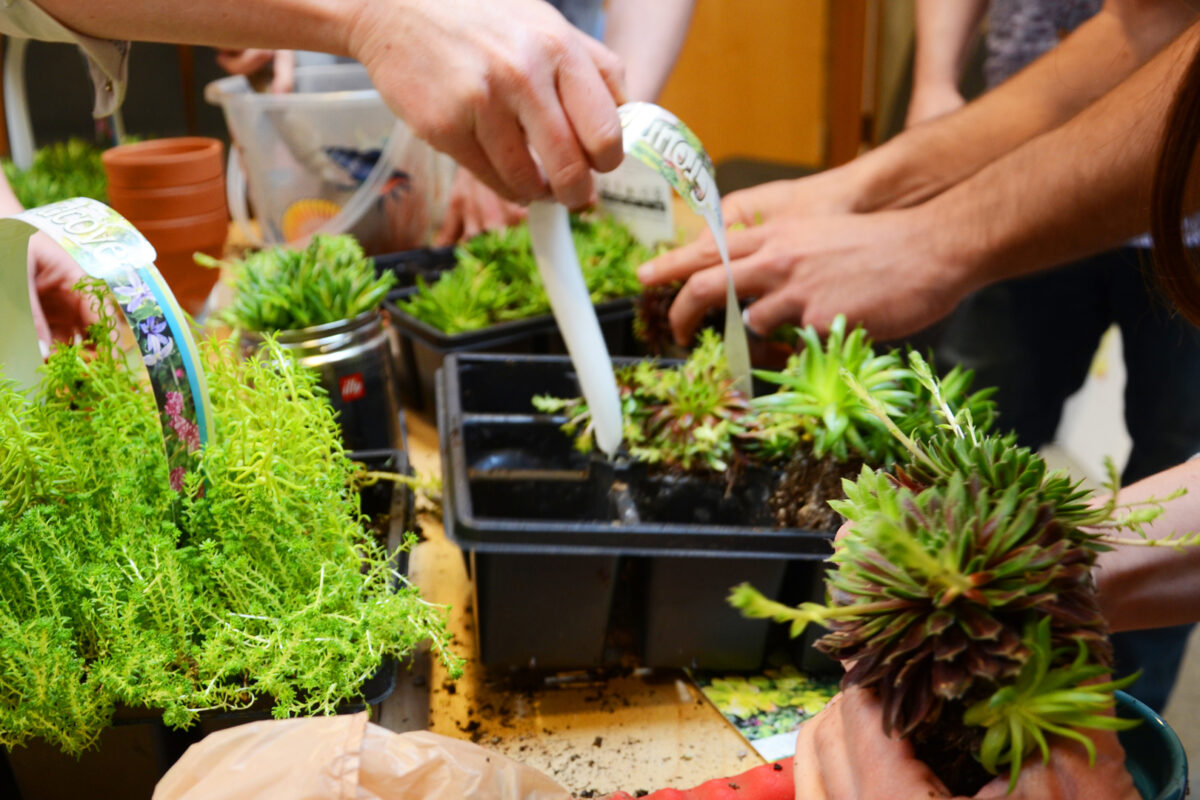Virtual Reality and the User Experience – from Training to Post-Occupancy Evaluation
At Opsis, we value the process of exploration, research and discovery of ideas and technologies that are essential to advancing evidence-based solutions in our industry and for clients. The Opsis Research Initiative team provides the foundation to support design innovations and technologies, while also collaborating with students, consultants and clients to grow our collective knowledge of advancements, innovative solutions and new technology.
Opsis participated in Portland State University’s Research-Based Design Initiative, a program that produces “translational building science research in collaboration with firms in Portland, Oregon.” Two primary activities take place over the course of two sequential terms: “students conducting building science research of relevance to a project currently under design in a firm, and students are embedded in projects team where they attend all interdisciplinary meetings for the course of a term to witness and document interdisciplinary collaboration.” From the evidence-based data gathered, firms can integrate it within their current project, forming a mutually beneficial relationship between students and firms.
Virtual Reality and the User Experience- from Training to Post-Occupancy Evaluation
Virtual Reality (VR) technology is a computer-generated simulation of an environment, submersing users into three-dimensional, interactive experiences. As a tool for designing and visualizing the built environment, VR has the potential to offer enhanced user experience and learning through the integration of games. ‘Gamification’ relates to interactive and eye-catching elements of a VR simulation that enhance the experience, primarily used in video games. The gamified VR results in a memorable experience, and helps the content maintain relevancy to the user, providing a richer learning experience.
In architectural settings, there is room to further integrate gamified VR technology via pre-occupancy training to demonstrate how the space can be used and inform design changes that further support program use. During their research, PSU students found that 25% of a building’s energy usage is due to unfavored occupant behavior, like increasing air conditioner demands instead of utilizing windows to cool a space down. Occupant misuse is usually found in a post-occupancy evaluation of the building, where firms understand the building’s success in supporting program use, and how users are utilizing the spaces. Architects commonly uncover occupant misuse via post-occupancy evaluation and create an opportunity to train users on correct building usage. Pre-occupancy training helps establish a baseline understanding of the building’s functions and energy-saving potential, though it is not as common of a practice. Sustainability Design Leader Heather DeGrella encouraged students to work alongside VR software developer David Bynum to bridge a connection between VR technology, gamification tactics, and a multiuse classroom at Southwestern Oregon Community College’s Umpqua Health & Science Building.
Due to physical distance between Portland State and Southwestern Oregon Community College, testing for the class took place on the PSU campus, where nearby students were approached to test the VR equipment in school common areas. Many cases, students were eager to test the technology themselves, so gathering a large level of involvement in the preliminary testing phase in Fall 2017 was a simple task.
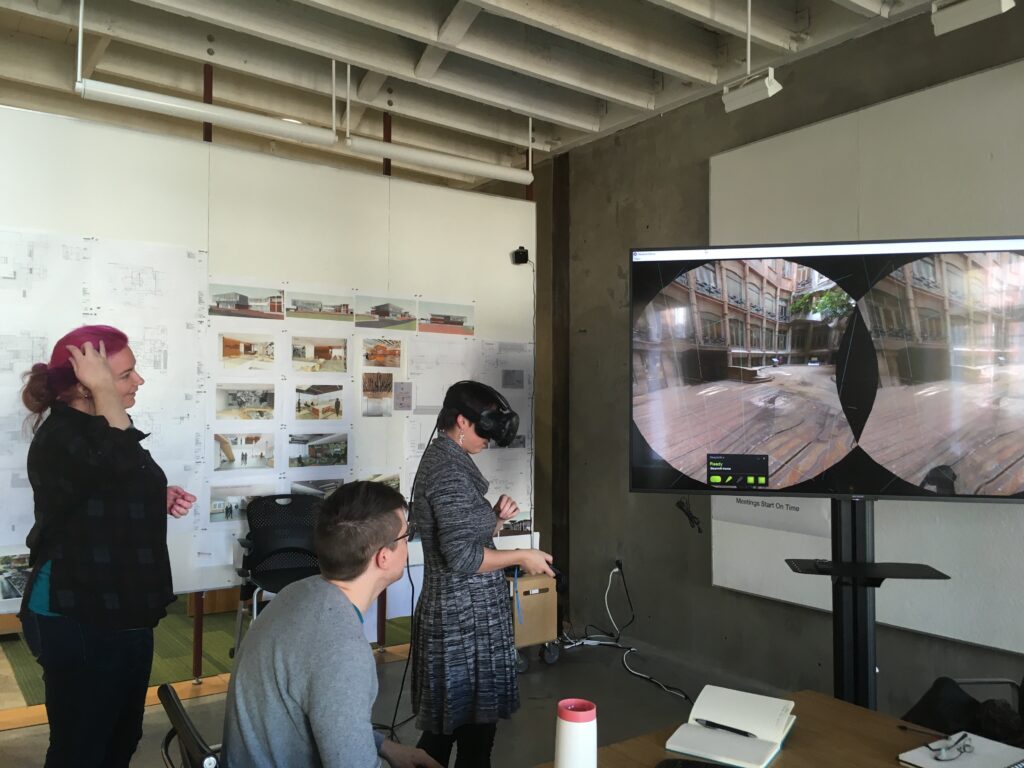
Testing conducted by Gwen Ward, Jenny Rodriguez, and Wayny Le at the Opsis studio
Research in Fall 2017 surrounded a comparison between 2D iPad software and 3D VR experiences. While the simulation on both platforms were identical, neither test group had high rates of success, pointing towards a need in software development to distinguish the impacts of each platform. Returning for the second term, Winter 2018, David Bynum worked with the PSU student research team to fine-tune the software. In the final version of the game, users were asked to cool the room using passive systems in the space and adhering to time and energy-use constraints, where the simulation is concluded by successfully cooling the room or running out of time. Testing again, the developed software aided both test groups in their respective success rates. It was not concluded that VR explicitly impacted the success rate of the game but demonstrated an increased user experience that followed the experience of the simulation.
The VR testing proved to be an effective method of sharing building use protocols to students, where the 3D simulation produced longer knowledge retention and converted a normally unappealing experience into an interactive, memorable learning lesson. Because of its success, the research team was eager to develop the software further to incorporate VR without the gamification component and use it in the Umpqua Health & Science Building. Unfortunately, as the software was preparing for this next step, COVID put a hiatus on the project.
Now as the Umpqua Health & Science Building is completed and occupied, Heather DeGrella and the rest of the Opsis research team are excited to bring the technology to a post-occupancy evaluation on the Southwestern Oregon Community College campus. Through Opsis’ experience with Portland State’s Research-Based Design Initiative, Opsis was able to explore the technology we already owned and use it in a way that was unfamiliar and intriguing. The experience revealed the time and effort that it takes to develop VR software, bringing further appreciation to Bynum Labs and other VR developing teams. Opsis looks towards the future integration of VR technology, where efficient development of software tool will allow it to become a common element in our practices, with hopes to introduce the building to our client before we are physically able to bring the client to the building.
To learn more about the student-led research, check out the “Pre-Occupancy Training with Virtual Reality” and “Virtual Reality & Gamification for Pre-Occupancy Training” posters developed by the PSU students.
